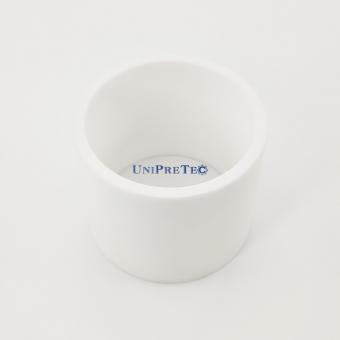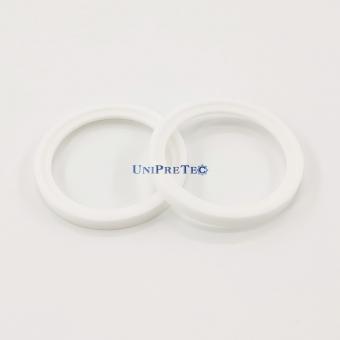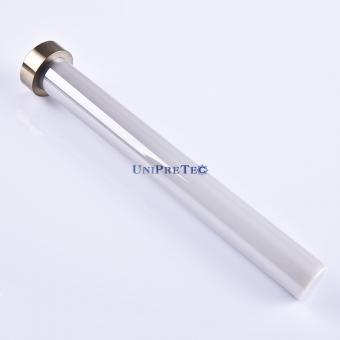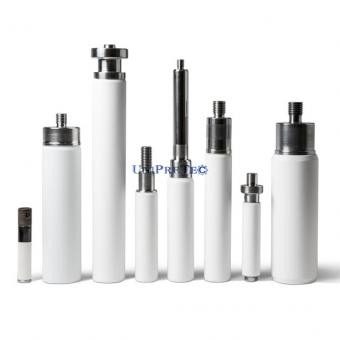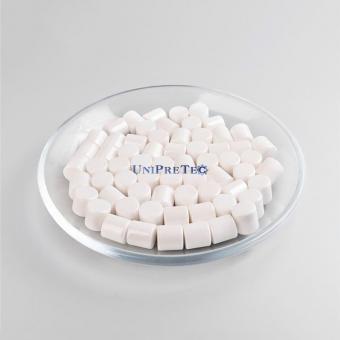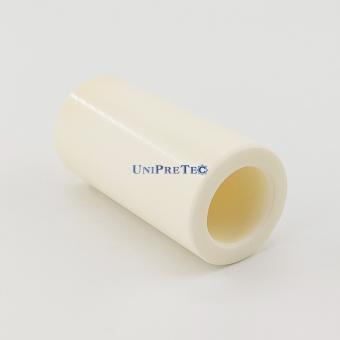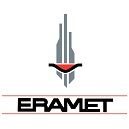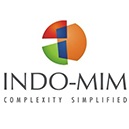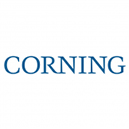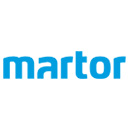The structure of Alumina Ceramic material is corundum type, and it has the characteristics of ionic bond, which makes the sliding system far less than that of metal, which leads to its lack of certain toughness and plasticity. Therefore, the exhibited fracture toughness is low, which greatly limits the wide application of alumina porcelain.

This article gives a brief introduction to the current toughening methods of alumina porcelain and its main mechanism, in order to bring readers some basic knowledge of ceramic toughening technology.
Common Toughening Methods for Alumina Ceramics
1. Toughened layered structure
Natural materials such as bamboo, shells, etc., have good overall performance due to their layered distribution. People get inspiration from these natural structures, and use bionic structures to improve the brittleness and toughness of ceramic materials.
The layered composite ceramic material is composed of multiple layers of materials. The elastic modulus and linear expansion coefficient of each layer are different, which in turn causes macroscopic stress between the layers and compressive stress on the surface. When subjected to external force, the strain energy can be absorbed to the maximum, and the crack can be repeatedly deflected and bent along the interface. In order to achieve the purpose of improving surface properties and overall toughness.
For example: Al2O3/Ni layered ceramics, the linear expansion coefficient of nickel is about) times that of alumina, which generates stress in the Al2O3 layer and has a large crack deflection ability, so the material has better toughness.
Layered ceramics are a new type of material with broad prospects, but the main disadvantage is that weak interlayer will reduce the strength of the material, and the properties of parallel and perpendicular to the interlayer are quite different and present anisotropy. Therefore, experts in the industry put forward the idea of using a strong interlayer to prepare a ZTA/Al2O3 strong interlayer with an impact toughness of more than 10 Mpa.m1/2, which is 2.8 times that of ZTA materials and 5.6 times that of Al2O3 ceramics. Some scientists have simulated layered composite ceramics through computers, and the result is that too high or too low strength of the soft layer material will reduce the overall toughness of the composite ceramic. When increasing the ratio of hard and soft layer thickness and elastic modulus, the uniformity of the hard layer can improve the toughness of the ceramic. This provides certain research ideas and optimization methods for layered toughened ceramics.
2. Fiber composite toughening
Studies have shown that the toughening efficiency of continuous fiber on ceramics is greater than other toughening methods. It is the highest toughness that ceramic series can achieve so far, reaching about 20Mpa.m1/2, so it is a very effective way to improve the brittleness of ceramic materials.
This method disperses fibers with higher strength and elastic modulus in a ceramic matrix. Under the action of external force, a part of the load of the composite material is borne by the fiber to reduce the load of the matrix itself. Moreover, when the fiber in the matrix breaks when the bearing force is greater than its strength, the fiber will have a pull-out mechanism. In addition, these fibers also have crack bridges and deflection in the matrix to prevent crack propagation. These three toughening mechanisms work together to greatly improve the toughness of ceramic materials.
At present, the fibers used in Al2O3 ceramics mainly include carbon fiber, silicon carbide fiber, aluminum silicate fiber and so on. Studies have found that increasing the aspect ratio of the fiber can increase the toughening effect. In the form of fiber use, the three-dimensional braid made of fiber has a better toughening effect. Similar to fiber, Al2O3 ceramics are toughened with whiskers, and the effect is also very good. Because whiskers are short fibers with a single crystal structure and a very small diameter (usually less than 3 um). It has few crystal defects, highly ordered atomic arrangement, and its strength is close to the theoretical value of bonding force between adjacent atoms. Theory and practice have proved that applying it to the toughening of ceramics has a certain effect on improving toughness. If silicon carbide whiskers (volume fraction up to 20%-30%) are introduced into Al2O3-based ceramics, the segment toughness can reach 8~8.5 Mpa.m1/2.
In addition to the mechanisms of whisker toughening, such as pull-out, crack deflection, crack bridging, and pinning, its high strength is also a reason. Therefore, in theory, increasing the strength of the whisker, reducing its elastic modulus, and increasing the aspect ratio can improve the toughening effect. The disadvantage of fiber and whisker toughened Al2O3 porcelain is that it is difficult to guarantee the uniformity of mixing.

3. Self-toughening
The so-called self-toughening refers to the growth of toughened and reinforced phases under certain technological conditions. It eliminates the physical or chemical incompatibility between the matrix phase and the toughening phase to a certain extent, and ensures the thermodynamic stability of the matrix phase and the toughening phase.
For Al2O3 ceramics, anisotropic growth of grains toughened Al2O3 has become a research hotspot to overcome the brittleness of alumina porcelain. The main mechanism is to control the growth direction of Al2O3 grains through technological measures, so that they grow into rods and long columns along certain crystal planes, which play a toughening effect similar to whiskers. When subjected to external loads, bridging occurs at the crack tail; and these anisotropically grown Al2O3 will also produce toughening mechanisms such as pullout and crack deflection, which improves the toughness of the entire alumina ceramic.
4. Phase change toughening
This is a toughening formula that has been studied relatively early and commonly. It artificially creates a large number of very fine cracks in the material to absorb energy and prevent crack propagation. Among them, the main focus is on the martensitic transformation of ZrO2, and the more successful ceramic materials such as ZTA and ZTM. ZrO2 is dispersed in the Al2O3 matrix. Due to the different linear expansion coefficients of the two, during cooling, the ZrO2 particles are subjected to compressive stress and the phase change is blocked. Then, when the material is subjected to an external force, the pressure on the ZrO2 particles is relaxed, the tetragonal phase is transformed into a monoclinic phase, and microcracks are generated in the matrix after volume expansion, and the energy of the main crack is absorbed to achieve the toughening effect. This is the stress-induced phase transformation toughening mechanism.
In the toughening mechanism, in addition to the induced phase transition mechanism of ZrO2, the phase transition produces volume expansion, and the phenomenon of squeezing from the crack area to the non-phase transition area makes the crack closed and difficult to expand, which can improve the toughness. Some researchers used ZrO2 with a volume fraction of 10% to 30% to prepare ZTA ceramics and found that when the volume fraction of ZrO2 was 20%, the toughening effect was the best.
Summary:
Ceramic toughening technology will be a hot technology in the material industry for a long time in the future. If the inherent high strength, high temperature resistance, low expansion coefficient and other characteristics of ceramic materials can be combined with high toughness, it will be a high-performance material that the material industry dreams of, and its application fields are extremely wide.








